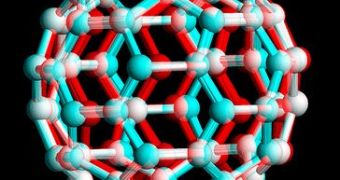Identifying biomarkers faster and more precisely is the aim of a new strategy developed by scientists at the UK's National Physical Laboratory.
Biomarkers are specific to every disease but identifying them and starting treatment at a very early stage is rather difficult and time consuming.
Dr Max Ryadnov, Principle Research Scientist in the group said that “this new strategy, uses a probe to 'fish' for likely proteins, selecting them from a crowded blood sample.”
“A microgel on the probe works like a sponge, picking up proteins which have a charge or mass within a certain range.”
By using mass spectrometry - a technique where the molecules are charged and identified from their mass-to-charge ratio, researchers can tell if the biomarker is present in the sample or not.
So they did test the probe on fluids containing human growth hormone, which is forbidden in competitive sports and normally, only used for therapeutic purposes.
The protein is usually found in the blood at very low frequencies – around 100 nanograms per milliliter, and this probe managed to detect it even when only 40 nanograms per milliliter were present.
This is a great news for specialists, especially since this new technique is much faster than the traditional one, taking “one day instead of a few days or even a week,” according to Dr Ryadnov.
This work could open the way for new tools able to detect early stages of Alzheimer's and cancer at a molecular level.
Dr Paulina Rakowska, Senior Research Scientist in the group, said that the aim is to make “these types of probe suitable for detecting different classes of diseases, mainly Alzheimer's and the like,” and also hope that they would have applications for cancer.
The Biotechnology Group is working on improving biomarker detection techniques, so they are already working on a probe which can select one specific protein, rather than ranges of size or charge.
Another goal is to be able to quantify the level of proteins and not just detect their presence.
The main idea is that all this research and development will help raise the success rate of treatment through early intervention and will also allow drug companies to develop more effective drugs for these diseases.

 14 DAY TRIAL //
14 DAY TRIAL //